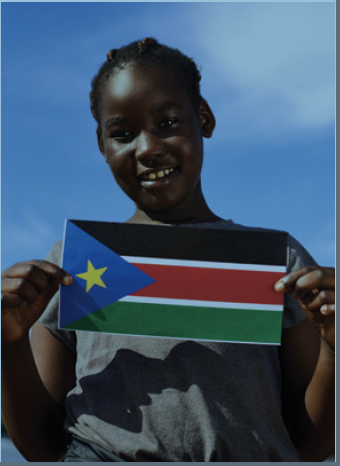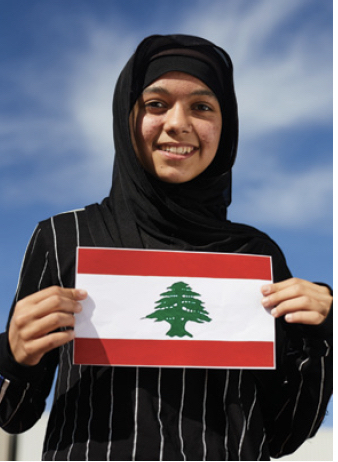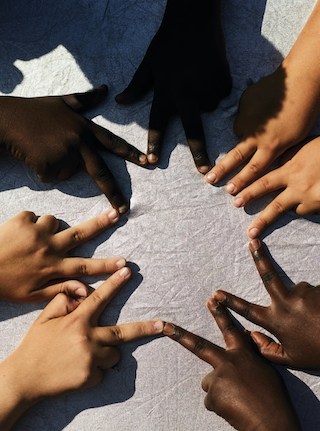Australia’s first and only human rights museum, The Museum of Freedom and Tolerance Western Australia is redesigning our pathway to social cohesion.
The words “design” and “architecture” take on an atypical meaning for Shaheen Hughes. She’s the Chief Executive Officer at The Museum of Freedom and Tolerance Western Australia (MFTWA), Australia’s first and only international human rights museum. The museum is not bricks and mortar but instead exists in transient form, materialising in different ways, at different times. Whether collaborating on events or hosting installations and activations in public spaces, one thing is at the heart of this museum without walls: a mission to redesign our social architecture in a way that leads to compassion and cohesion.
“Our overall mission is to find innovative and arts-based ways to dismantle prejudice, intolerance and systemic racism,” Hughes says. “We wanted to approach it in a creative way because these are quite difficult and confrontational issues. When you use the arts, you’ve actually got a really beautiful pathway in – an empathy-based pathway.”
The museum was founded in 2012 by Adam Levin, a corporate lawyer whose Jewish background prompted him to rally a small group of individuals concerned about the increasing climate of intolerance. After years of research and consensus-building, the museum launched their flagship project ‘In Visible Ink’ at a twoday symposium co-presented with the WA Museum in February 2019. The project’s objective was to “make stories of people and communities marginalised by race and religion visible”. It invited “curators” to take to the materials around them (including advertising, news articles and legislation) with highlighters and post-it notes, uncovering hidden stories or biases and in turn, questioning the dominant narratives presented to us by our existing social and civic architecture. This culminated in an ‘archive hack’ at the State Library, where participants engaged critically with archival documents from the James Sykes Battye Library of West Australian History to shine light on the ‘untold stories’ of our colonial and migrant past. The project was simultaneously utilising the architecture of the museum, and interrogating these institutions’ roles in perpetuating the visibility and invisibility of certain histories.
According to Hughes, this kind of collaboration has been crucial to MFTWA’s success, both in reaching a larger audience and simply in holding true to the organisation’s inclusive values. It’s part of what she calls “the architecture of inclusion”.
“There are so many groups in Perth working in this creative social justice space,” she says. “There is common purpose among us, so our architecture of inclusion needs to be based on collaboration and cocreation. It’s about bringing all of these institutions together to think critically, instead of seeing them along this left-to-right spectrum.”
One such collaboration – with the Community Arts Network and Edmund Rice Centre – was the creation of a printed pocket-guide to the Universal Declaration of Human Rights, which launched in commemoration of the Declaration’s 70th anniversary in December 2018. Through contemporary design and photography, the dense, statutory document was transformed into an aesthetically pleasing, pocket-sized booklet featuring young peoples’ interpretations of the declaration’s thirty articles. Hughes says that it serves as a reminder of some of the “invisible architecture” already in place to safeguard our human rights, which we often fail to remember or recognise.
“We were asking ourselves, “what is some of the architecture around us that upholds and preserves human rights?” Says Hughes. “The Declaration is an example of the sometimes invisible architecture that we can call into service that not everyone knows about. But, the next question is, how do we use design to liberate some of these principles and statutes that people can then use in a productive way?”
The featured interpretations were also projected on the Yagan Square tower’s digital screens; a kind of merging of both our physical and social architecture designed to remind us of our universal humanity.
At the core of the museum’s work is the notion of “vertical literacy”. Although this term might be unfamiliar to some, Hughes lives and breathes it. Defined by MIT senior lecturer Otto Scharmer, who champions wellbeing-led societal change, to have vertical literacy is to have the capacity to shift one’s consciousness from ego (self-centric) to eco (whole-system-centric). Hughes speaks of the need to design an environment that transitions people from a place of fear, hatred and close-mindedness (ego – the bottom of the scale), up to a place of openness, compassion and curiosity (eco – the top of the scale). Yet how do we design our social architecture, and thereby our social interactions, to be conducive to this transition? Hughes says the key is in rehumanising the national conversation.
“At the heart of racism and of conflict, and of most of our major societal divides, is this idea of othering and dehumanising whole groups of people based on stereotypes,” she says. “How do we transcend this? If we can look at each other with empathy through the arts, and truly see each other as humans, perhaps we can start to understand each other. It doesn’t matter if you’re from the socalled ‘right’ or ‘left’; you can still build compassion for someone, if you see them as a human.”
Of course, the looming question is what that looks like in practice – where does the museum go from here? Hughes says MFTWA hasn’t ruled out working towards a permanent community space, but the priority, at least for the time being, is elsewhere. The second stage of ‘In Visible Ink’ is set to commence in the latter half of this year, and while details haven’t yet been announced, the emphasis will be on improving the ease of access to knowledge about our state’s diverse history.
“We’re drowning in information but we’re not drowning in knowledge,” says Hughes. “The information is there, the stories are there, if you look for them. But people are lost and tired and angry and polarised, and susceptible to misinformation. The museum will be a curator of a user experience that drives people forward to this vertical literacy, and we’re exploring ways to do that digitally.”
“We have got to start beating the algorithms, and start creating a new vertical literacy-based algorithm to lead people into compassion. It’s absolutely urgent.”
Visit – The Museum of Freedom & Tolerance





